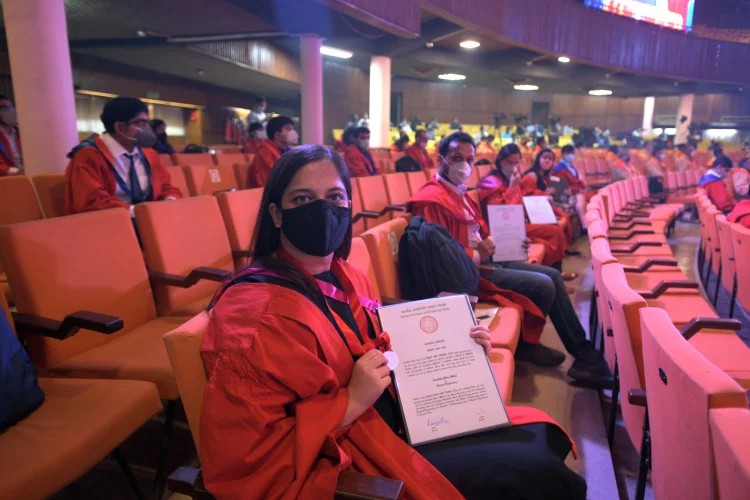
隨著后疫情時(shí)代的全球經(jīng)濟(jì)輪廓變得越來(lái)越清晰,幾乎沒(méi)有人會(huì)質(zhì)疑軟件行業(yè),,尤其是軟件即服務(wù)(SaaS)日益增長(zhǎng)的重要性,。美國(guó)企業(yè)現(xiàn)在平均使用1000多種SaaS產(chǎn)品,以其購(gòu)買(mǎi)力證明這種模式的有效性,。但很少有人意識(shí)到,,立足于他們?cè)贗T服務(wù)領(lǐng)域長(zhǎng)期的領(lǐng)先地位,印度企業(yè)家正在成長(zhǎng)為全球經(jīng)濟(jì)中舉足輕重的SaaS巨頭,。印度的人才庫(kù),、本地資源和市場(chǎng)動(dòng)態(tài),以及“傳承文化”,,正在推動(dòng)這種趨勢(shì)發(fā)展為長(zhǎng)期主導(dǎo)地位,。
在過(guò)去的五年里,原本不起眼的印度SaaS生態(tài)系統(tǒng)獲得長(zhǎng)足發(fā)展,,現(xiàn)在擁有超過(guò)1000家SaaS創(chuàng)業(yè)公司,,其中150多家的營(yíng)收超過(guò)100萬(wàn)美元。2019年,,軟件評(píng)測(cè)網(wǎng)站G2發(fā)現(xiàn),,印度SaaS公司獲得的評(píng)測(cè)和流量比上一年猛增350%,,是世界主要地區(qū)中增長(zhǎng)最快的。去年,,印度SaaS創(chuàng)業(yè)公司獲得的融資額也增加了一倍多,,首次超過(guò)10億美元。盡管美國(guó)在SaaS領(lǐng)域的300億美元投資使這一數(shù)額相形見(jiàn)絀,,但飛速成長(zhǎng)的印度SaaS生態(tài)系統(tǒng)明顯具有成本效率和其他優(yōu)勢(shì),,從而夯實(shí)了印度在這一領(lǐng)域的重要地位。
我們預(yù)計(jì)這一趨勢(shì)將加速發(fā)展,。作為親身參與印度SaaS企業(yè)建設(shè)和融資的企業(yè)家——比如,,在印度SaaS領(lǐng)先企業(yè)對(duì)美國(guó)同行展開(kāi)的首批收購(gòu)交易之一中,本文的兩位作者分別服務(wù)于收購(gòu)和被收購(gòu)一方——我們看到一些非常強(qiáng)大的積極因素正交匯于印度,。這種融合進(jìn)一步加強(qiáng)了我們的預(yù)期:在10年內(nèi),,印度將成為當(dāng)時(shí)估值高達(dá)1萬(wàn)億美元的SaaS軟件產(chǎn)業(yè)的全球中心。這意味著印度企業(yè)家和工程師將助力最關(guān)鍵的全球生產(chǎn)力推動(dòng)器不斷向前發(fā)展,。至少,,對(duì)于正在考慮自身戰(zhàn)略和合作伙伴的全球軟件供應(yīng)商和廣大軟件用戶(hù)來(lái)說(shuō),這一點(diǎn)非常重要,。
如前所述,,印度正在成為SaaS創(chuàng)業(yè)的主要發(fā)源地。這個(gè)機(jī)會(huì)的根源可追溯至上世紀(jì)50年代印度理工學(xué)院(IIT)開(kāi)始在全國(guó)各地建立校園那一刻,。這些校園為印度創(chuàng)造了堪稱(chēng)全球之最的科技人才庫(kù),。這反過(guò)來(lái)又促進(jìn)了印度IT服務(wù)業(yè)的誕生。現(xiàn)如今,,印度IT服務(wù)業(yè)占據(jù)全球市場(chǎng)的最大份額,,擁有約400萬(wàn)雇員。
隨著印度經(jīng)濟(jì)規(guī)模不斷擴(kuò)大,,在美國(guó)和其他國(guó)家頂級(jí)風(fēng)險(xiǎn)投資和科技企業(yè)領(lǐng)導(dǎo)人的指導(dǎo)下,,有能力的印度IT服務(wù)公司已經(jīng)磨練出了一個(gè)愈來(lái)愈專(zhuān)注于產(chǎn)品開(kāi)發(fā)的龐大人才庫(kù)。此外,,許多全球科技巨頭,,比如亞馬遜、微軟和谷歌,,都將其美國(guó)以外的最大研發(fā)中心設(shè)在了印度,。此舉旨在利用印度的成本優(yōu)勢(shì),但它也幫助印度培養(yǎng)了一批世界級(jí)的產(chǎn)品管理,、設(shè)計(jì)和工程人才?,F(xiàn)在,這些人才紛紛投身于科技創(chuàng)業(yè)公司,,尤其是SaaS領(lǐng)域。
坐擁這些人才質(zhì)量和成本優(yōu)勢(shì)的印度SaaS企業(yè)家,正在見(jiàn)證本土市場(chǎng)不斷增長(zhǎng)的收益前景,。之前很少有印度公司是活躍的SaaS買(mǎi)家,,但現(xiàn)在,印度已經(jīng)成為軟件,,尤其是SaaS的巨大消費(fèi)樂(lè)園,。據(jù)當(dāng)?shù)匦袠I(yè)協(xié)會(huì)Nasscom估計(jì),2018-2022年,,印度SaaS市場(chǎng)的年復(fù)合增長(zhǎng)率高達(dá)36%,。這正在推動(dòng)印度SaaS供應(yīng)商發(fā)展壯大,因?yàn)樗麄兛梢愿佑行У貙W(xué)習(xí)和擴(kuò)展,。
隨著印度SaaS公司更快地找到適合印度初始客戶(hù)的產(chǎn)品市場(chǎng),,它們可以擴(kuò)大規(guī)模,為包括東南亞和中東在內(nèi)的鄰近地區(qū)提供服務(wù),。然后,,許多SaaS企業(yè)迅速將目光投向美國(guó),從而幫助美國(guó)創(chuàng)造了頗具吸引力的就業(yè)機(jī)會(huì),。根據(jù)我們的經(jīng)驗(yàn),,其中最成功的公司要么將高層管理人員轉(zhuǎn)移到美國(guó),要么通過(guò)收購(gòu)迅速擴(kuò)大美國(guó)的業(yè)務(wù)規(guī)模,。
在印度SaaS創(chuàng)業(yè)公司進(jìn)入市場(chǎng)之際,,另一個(gè)巨大的新機(jī)遇也在迅速發(fā)展,即通過(guò)SaaS以生產(chǎn)規(guī)模提供人工智能技術(shù),。在SaaS不斷取代企業(yè)資源規(guī)劃(ERP),、客戶(hù)關(guān)系管理(CRM)和銷(xiāo)售點(diǎn)(POS)系統(tǒng)等核心軟件領(lǐng)域的基礎(chǔ)上,這一轉(zhuǎn)向人工智能的趨勢(shì)表明,,全球向SaaS的轉(zhuǎn)變?nèi)蕴幱谠缙陔A段,。
另一個(gè)有利于印度崛起為全球SaaS經(jīng)濟(jì)中心的因素是,行業(yè)領(lǐng)袖樂(lè)于“傳承”的價(jià)值觀,。這幫助印度SaaS社區(qū)成為一臺(tái)真正的自學(xué)機(jī)器,。今年早些時(shí)候,在金奈市舉行的一場(chǎng)SaaS創(chuàng)業(yè)者聚會(huì)上,,一些成功的領(lǐng)導(dǎo)者,,比如Freshworks首席執(zhí)行官吉里什?邁克斯博瑟姆,特意花了好幾個(gè)小時(shí)向年輕公司的同行傾囊相授,,非??犊胤窒硭麄兩罡鸖aaS行業(yè)的心得體會(huì)——為了所有人的利益,甚至是潛在競(jìng)爭(zhēng)對(duì)手的利益,。這種回饋社區(qū)的愿望可以說(shuō)是許多印度企業(yè)家的一個(gè)特殊標(biāo)志,。像硅谷印度企業(yè)家協(xié)會(huì)(TiE)這種長(zhǎng)期存在的機(jī)構(gòu),,就充分體現(xiàn)了這一點(diǎn)。
隨著企業(yè)逐漸走出危機(jī)頻發(fā)的一年,,這樣一個(gè)有望成為全球經(jīng)濟(jì)支柱的行業(yè)正在為自己奠定重要的發(fā)展根基,。獨(dú)特的傳承文化、全球規(guī)模最大的高增長(zhǎng)產(chǎn)品創(chuàng)業(yè)生態(tài)系統(tǒng),,熟練的產(chǎn)品開(kāi)發(fā)人才,,研發(fā)成本優(yōu)勢(shì),再加上在印度和其他地方打造的日趨成熟的銷(xiāo)售和營(yíng)銷(xiāo)生態(tài)系統(tǒng),,所有這一切非常清晰地向世界表明,,SaaS的未來(lái)在印度。
Atul Jalan是Manthan Systems公司首席執(zhí)行官兼董事總經(jīng)理,。這家位于班加羅爾的SaaS公司專(zhuān)注于為零售和消費(fèi)品牌公司提供一整套解決方案,。他著有《人類(lèi)將帶我們?nèi)ツ睦铩?企鵝出版社,2019)一書(shū)。
Brewer Stone是Nfluence Partners公司合伙人,,致力于為美國(guó)和印度的科技企業(yè)家和投資者提供咨詢(xún)服務(wù),,其中包括一家被Manthan收購(gòu)的美國(guó)SaaS公司。(財(cái)富中文網(wǎng))
譯者:任文科
隨著后疫情時(shí)代的全球經(jīng)濟(jì)輪廓變得越來(lái)越清晰,,幾乎沒(méi)有人會(huì)質(zhì)疑軟件行業(yè),,尤其是軟件即服務(wù)(SaaS)日益增長(zhǎng)的重要性。美國(guó)企業(yè)現(xiàn)在平均使用1000多種SaaS產(chǎn)品,,以其購(gòu)買(mǎi)力證明這種模式的有效性,。但很少有人意識(shí)到,立足于他們?cè)贗T服務(wù)領(lǐng)域長(zhǎng)期的領(lǐng)先地位,,印度企業(yè)家正在成長(zhǎng)為全球經(jīng)濟(jì)中舉足輕重的SaaS巨頭,。印度的人才庫(kù)、本地資源和市場(chǎng)動(dòng)態(tài),,以及“傳承文化”,,正在推動(dòng)這種趨勢(shì)發(fā)展為長(zhǎng)期主導(dǎo)地位。
在過(guò)去的五年里,,原本不起眼的印度SaaS生態(tài)系統(tǒng)獲得長(zhǎng)足發(fā)展,,現(xiàn)在擁有超過(guò)1000家SaaS創(chuàng)業(yè)公司,其中150多家的營(yíng)收超過(guò)100萬(wàn)美元,。2019年,,軟件評(píng)測(cè)網(wǎng)站G2發(fā)現(xiàn),印度SaaS公司獲得的評(píng)測(cè)和流量比上一年猛增350%,,是世界主要地區(qū)中增長(zhǎng)最快的,。去年,印度SaaS創(chuàng)業(yè)公司獲得的融資額也增加了一倍多,,首次超過(guò)10億美元,。盡管美國(guó)在SaaS領(lǐng)域的300億美元投資使這一數(shù)額相形見(jiàn)絀,,但飛速成長(zhǎng)的印度SaaS生態(tài)系統(tǒng)明顯具有成本效率和其他優(yōu)勢(shì),從而夯實(shí)了印度在這一領(lǐng)域的重要地位,。
我們預(yù)計(jì)這一趨勢(shì)將加速發(fā)展,。作為親身參與印度SaaS企業(yè)建設(shè)和融資的企業(yè)家——比如,,在印度SaaS領(lǐng)先企業(yè)對(duì)美國(guó)同行展開(kāi)的首批收購(gòu)交易之一中,,本文的兩位作者分別服務(wù)于收購(gòu)和被收購(gòu)一方——我們看到一些非常強(qiáng)大的積極因素正交匯于印度。這種融合進(jìn)一步加強(qiáng)了我們的預(yù)期:在10年內(nèi),,印度將成為當(dāng)時(shí)估值高達(dá)1萬(wàn)億美元的SaaS軟件產(chǎn)業(yè)的全球中心,。這意味著印度企業(yè)家和工程師將助力最關(guān)鍵的全球生產(chǎn)力推動(dòng)器不斷向前發(fā)展。至少,,對(duì)于正在考慮自身戰(zhàn)略和合作伙伴的全球軟件供應(yīng)商和廣大軟件用戶(hù)來(lái)說(shuō),,這一點(diǎn)非常重要。
如前所述,,印度正在成為SaaS創(chuàng)業(yè)的主要發(fā)源地,。這個(gè)機(jī)會(huì)的根源可追溯至上世紀(jì)50年代印度理工學(xué)院(IIT)開(kāi)始在全國(guó)各地建立校園那一刻。這些校園為印度創(chuàng)造了堪稱(chēng)全球之最的科技人才庫(kù),。這反過(guò)來(lái)又促進(jìn)了印度IT服務(wù)業(yè)的誕生?,F(xiàn)如今,印度IT服務(wù)業(yè)占據(jù)全球市場(chǎng)的最大份額,,擁有約400萬(wàn)雇員,。
隨著印度經(jīng)濟(jì)規(guī)模不斷擴(kuò)大,在美國(guó)和其他國(guó)家頂級(jí)風(fēng)險(xiǎn)投資和科技企業(yè)領(lǐng)導(dǎo)人的指導(dǎo)下,,有能力的印度IT服務(wù)公司已經(jīng)磨練出了一個(gè)愈來(lái)愈專(zhuān)注于產(chǎn)品開(kāi)發(fā)的龐大人才庫(kù),。此外,許多全球科技巨頭,,比如亞馬遜,、微軟和谷歌,都將其美國(guó)以外的最大研發(fā)中心設(shè)在了印度,。此舉旨在利用印度的成本優(yōu)勢(shì),,但它也幫助印度培養(yǎng)了一批世界級(jí)的產(chǎn)品管理、設(shè)計(jì)和工程人才?,F(xiàn)在,,這些人才紛紛投身于科技創(chuàng)業(yè)公司,尤其是SaaS領(lǐng)域,。
坐擁這些人才質(zhì)量和成本優(yōu)勢(shì)的印度SaaS企業(yè)家,,正在見(jiàn)證本土市場(chǎng)不斷增長(zhǎng)的收益前景。之前很少有印度公司是活躍的SaaS買(mǎi)家,,但現(xiàn)在,,印度已經(jīng)成為軟件,,尤其是SaaS的巨大消費(fèi)樂(lè)園。據(jù)當(dāng)?shù)匦袠I(yè)協(xié)會(huì)Nasscom估計(jì),,2018-2022年,,印度SaaS市場(chǎng)的年復(fù)合增長(zhǎng)率高達(dá)36%。這正在推動(dòng)印度SaaS供應(yīng)商發(fā)展壯大,,因?yàn)樗麄兛梢愿佑行У貙W(xué)習(xí)和擴(kuò)展,。
隨著印度SaaS公司更快地找到適合印度初始客戶(hù)的產(chǎn)品市場(chǎng),它們可以擴(kuò)大規(guī)模,,為包括東南亞和中東在內(nèi)的鄰近地區(qū)提供服務(wù),。然后,許多SaaS企業(yè)迅速將目光投向美國(guó),,從而幫助美國(guó)創(chuàng)造了頗具吸引力的就業(yè)機(jī)會(huì),。根據(jù)我們的經(jīng)驗(yàn),其中最成功的公司要么將高層管理人員轉(zhuǎn)移到美國(guó),,要么通過(guò)收購(gòu)迅速擴(kuò)大美國(guó)的業(yè)務(wù)規(guī)模,。
在印度SaaS創(chuàng)業(yè)公司進(jìn)入市場(chǎng)之際,另一個(gè)巨大的新機(jī)遇也在迅速發(fā)展,,即通過(guò)SaaS以生產(chǎn)規(guī)模提供人工智能技術(shù),。在SaaS不斷取代企業(yè)資源規(guī)劃(ERP)、客戶(hù)關(guān)系管理(CRM)和銷(xiāo)售點(diǎn)(POS)系統(tǒng)等核心軟件領(lǐng)域的基礎(chǔ)上,,這一轉(zhuǎn)向人工智能的趨勢(shì)表明,,全球向SaaS的轉(zhuǎn)變?nèi)蕴幱谠缙陔A段。
另一個(gè)有利于印度崛起為全球SaaS經(jīng)濟(jì)中心的因素是,,行業(yè)領(lǐng)袖樂(lè)于“傳承”的價(jià)值觀,。這幫助印度SaaS社區(qū)成為一臺(tái)真正的自學(xué)機(jī)器。今年早些時(shí)候,,在金奈市舉行的一場(chǎng)SaaS創(chuàng)業(yè)者聚會(huì)上,,一些成功的領(lǐng)導(dǎo)者,比如Freshworks首席執(zhí)行官吉里什?邁克斯博瑟姆,,特意花了好幾個(gè)小時(shí)向年輕公司的同行傾囊相授,,非常慷慨地分享他們深耕SaaS行業(yè)的心得體會(huì)——為了所有人的利益,,甚至是潛在競(jìng)爭(zhēng)對(duì)手的利益,。這種回饋社區(qū)的愿望可以說(shuō)是許多印度企業(yè)家的一個(gè)特殊標(biāo)志。像硅谷印度企業(yè)家協(xié)會(huì)(TiE)這種長(zhǎng)期存在的機(jī)構(gòu),,就充分體現(xiàn)了這一點(diǎn),。
隨著企業(yè)逐漸走出危機(jī)頻發(fā)的一年,這樣一個(gè)有望成為全球經(jīng)濟(jì)支柱的行業(yè)正在為自己奠定重要的發(fā)展根基。獨(dú)特的傳承文化,、全球規(guī)模最大的高增長(zhǎng)產(chǎn)品創(chuàng)業(yè)生態(tài)系統(tǒng),,熟練的產(chǎn)品開(kāi)發(fā)人才,研發(fā)成本優(yōu)勢(shì),,再加上在印度和其他地方打造的日趨成熟的銷(xiāo)售和營(yíng)銷(xiāo)生態(tài)系統(tǒng),,所有這一切非常清晰地向世界表明,SaaS的未來(lái)在印度,。
Atul Jalan是Manthan Systems公司首席執(zhí)行官兼董事總經(jīng)理,。這家位于班加羅爾的SaaS公司專(zhuān)注于為零售和消費(fèi)品牌公司提供一整套解決方案。他著有《人類(lèi)將帶我們?nèi)ツ睦铩?企鵝出版社,2019)一書(shū),。
Brewer Stone是Nfluence Partners公司合伙人,,致力于為美國(guó)和印度的科技企業(yè)家和投資者提供咨詢(xún)服務(wù),,其中包括一家被Manthan收購(gòu)的美國(guó)SaaS公司,。(財(cái)富中文網(wǎng))
譯者:任文科
As the contours of the post-COVID global economy sharpen, few would dispute the accelerating importance of software generally and of software as a service (SaaS) specifically. The average U.S. enterprise now uses more than 1,000 SaaS products, demonstrating with their buying power the effectiveness of this model. What fewer recognize is that Indian entrepreneurs are the global economy’s emerging SaaS powerhouse, building on longstanding leadership in IT services. India’s talent pool, local resources and market dynamics, and pay-it-forward attitudes are driving this trend toward longer-term dominance.
Over just the past five years, India has gone from a modest SaaS ecosystem to more than 1,000 SaaS startups, of which more than 150 have exceeded $1 million in revenues. The software reviews website G2 found that reviews and traffic for Indian SaaS companies jumped 350% in 2019 over the prior year, the fastest of any major region in the world. Funding for SaaS startups in India also more than doubled to exceed $1 billion last year for the first time. Although the $30 billion invested in the U.S. dwarfs this amount, the budding Indian SaaS ecosystem’s evident cost efficiencies and other advantages ensure that India matters.
We expect this trend to accelerate. As entrepreneurs ourselves engaged in building and financing Indian SaaS businesses—including serving on opposite sides in one of the first acquisitions by an Indian SaaS leader of a U.S. counterpart—we see a convergence of powerful positives at work here. This convergence undergirds our expectation that in a decade India will be the global center for the then-estimated $1 trillion SaaS software industry—meaning that the country’s entrepreneurs and engineers will help drive the most critical enabler of global productivity. At the very least, this matters to both software vendors and users globally as they consider their own strategies and partnerships.
The roots of India’s opportunity to become the leading fount of SaaS entrepreneurship date to the inception of the Indian Institute of Technology (IIT) campuses across the country during the 1950s, which helped create what is arguably the world’s largest technical talent pool. This in turn helped give birth to India’s IT services industry, which today has the lion’s share of the global market and employs about 4 million people.
As the Indian economy has continued to scale, India’s capable IT services companies have honed a huge talent pool now increasingly focused on product development, guided by leaders at top venture capital and technology businesses in the U.S. and elsewhere. Moreover, many global tech powers such as Amazon, Microsoft, and Google have their largest R&D centers outside the U.S. in India, recognizing cost advantages while helping to build world-class product management and design and engineering talent that is now plunging into startups, particularly in SaaS.
On top of these advantages in the quality and cost of talent, Indian SaaS entrepreneurs see expanding benefits in their home market. While few Indian companies were active SaaS buyers previously, now India has become a huge greenfield consumption playground for software in general and SaaS in particular. The India SaaS market is estimated to be growing at a 36% CAGR (2018–2022) per the local industry association Nasscom, and this is boosting Indian SaaS providers as they can more efficiently learn and scale.
With Indian SaaS companies finding product market fit more quickly with initial customers in India, they can then scale and serve adjacent regions including Southeast Asia and the Middle East. Many SaaS businesses then move quickly to target the U.S., thereby creating attractive U.S. jobs. In our experience, the most successful among them then either move top management to the U.S. or build a large presence quickly through acquisition.
Indian SaaS startups are also coming to market just as the massive new opportunity is developing to deliver artificial intelligence via SaaS at production scale. Building on SaaS’s ongoing replacement of core software segments such as enterprise resource planning (ERP), customer relationship management (CRM), and point of sales (POS) systems, this move into A.I. shows that the shift to SaaS globally is still in its early innings.
Another factor favoring India’s rise as the center of the global SaaS economy is key industry leaders’ “pay it forward” values, which have helped the Indian SaaS community to become a true self-learning machine. At a Chennai gathering for SaaS entrepreneurs earlier this year, successful leaders like Freshworks CEO Girish Mathrubootham devoted hours to educating peers at younger companies about the entire SaaS playbook—for the benefit of all, even potential future competitors. This desire to give back is arguably a particular hallmark of many Indian entrepreneurs and is reflected in longstanding institutions such as The Indus Entrepreneurs (TiE) in Silicon Valley.
As companies emerge from a year dominated by crises, important foundations are being set for an industry that is becoming a lynchpin of the global economy. With a pay-it-forward culture, one of the largest high-growth product startup ecosystems, skilled product development talent, R&D cost advantages, as well as maturing sales and marketing ecosystems in India and beyond, the future of SaaS is evident—in India.
Atul Jalan is the CEO & MD of Manthan Systems, a Bangalore-based SaaS company that provides a suite of solutions for retail and consumer brand companies. He is the author of Where Will Man Take Us? (Penguin, 2019)
Brewer Stone is a partner at Nfluence Partners, where he advises U.S. and Indian technology entrepreneurs and investors, including a U.S. SaaS company being acquired by Manthan.






